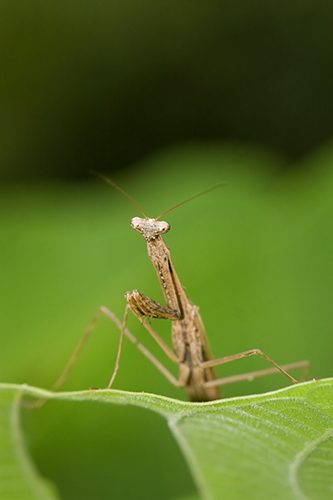Caracal: The Covert Cat of Central India
The caracal wild cat (Caracal caracal) is a rare species in India. In Madhya Pradesh it is locally called as Shea-gosh or siyah-gush, The black tufted ears of this cat are one of its most distinguishing features. In the Kutch dialect of Gujarat Caracals are locally referred to as Hornotro which means killer of a Blackbuck whereas in Rajasthan it is known as Junglee Bilao or Wildcat.
Caracals are slender, medium-sized cats with long powerful legs and tufted ears. The sub-species Caracal caracal schmitzi is found in India and this sub-species are presumed to be distributed from Arabia to Central India. Indian Caracals can weigh between five and eighteen kilograms, having a sleek mid-section and a short tail. Caracals have a gestation period of 10-11 weeks and the average litter size is three kittens.
The average life span of a caracal in the wild is around twelve years and seventeen in captivity. Caracals have a consistent reddish and sandy-coloured outer coat without any pattern. Young caracals are slightly paler in colour than adults. The long tufts are the sensitive hair on the ears that help them detect vibrations. These cats are experts in catching birds by leaping high into the air and their prey varies from rodents, hares, birds, and reptiles to small antelopes such as Chinkara.

In India, Caracals are mostly found in the tropical dry deciduous and tropical thorn and shrub forests of Central and Western India. A recent study in 2016 concluded that caracals have most likely become extinct in Madhya Pradesh. These cats are seen occasionally in Rajasthan and Gujarat states though not common in either of the states.
The International Union for Conservation of Nature (IUCN) lists the Caracal as “least concern” but in India, they are “endangered”. Caracals appeared in Indian paintings dating back to the seventeenth century. But today their survival in India has been endangered primary reasons are the rapid loss of scrub and thorn habitat and unchecked human activities in the caracal’s habitat. This species is most likely to go extinct in India even before we have a chance to know much about it. The cat has so much to offer in the study of natural history research. These secretive cats are rare and elusive and there are so many secrets about them that are yet to be revealed.
Courtesy: Malvika Verma
Photo Credit – Babbette and Anton, used with permission of Shekhar kolipaka
Pugdundee Safaris is recognized as one of India’s leading responsible safari companies. With seven intimate jungle lodges in Central India and many bespoke wilderness experiences, it presents the very best of the Indian subcontinent wildlife & hospitality. Between 2009 and 2022, we have been awarded for our excellence in wildlife safaris, our commitment to sustainability, our experienced naturalists, and our pioneering mobile safari initiative.
Pugdundee is a Hindi word meaning a foot trail commonly used by humans and animals, this word is popularly used for such beaten paths in the Indian jungles. We continuously strive to deliver the best possible guest experience, while still integrating the conservation of jungles and the people living around them.
Today, Pugdundee Safaris is run by a passionate team of wildlife and hospitality professionals with a team of over 300 people committed to providing an incredible wildlife experience. The team includes naturalists, nature guides, boatmen, trackers, and a marketing team based in Delhi.
Besides its mainstay of running wildlife lodges, Pugdundee Safaris has been keenly engaged in conservation and community development activities. At Pugdundee we believe local people hold the future of the forests in their hands and can either help protect or destroy them. If we wish to conserve our forests, we must look after the needs of local people by helping to improve their ability to earn livelihoods. Our lodges set mostly in remote locations away from regular tourism hubs help ensure that the benefit of eco-tourism is distributed far and beyond.




